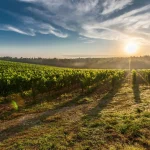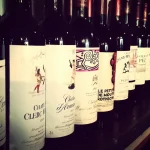Majestic recently introduced a new subscription service – “Wine Club by Majestic” – to replace the “Concierge” facility left over from its days in harness with Naked Wines.
In line with detailed customer research, it aims to be “frill free” without money off or similar eye-catching incentives.
Instead, it tries to enlarge “customer experiences” with videos, winemaker features, recipes aligned to the wines selected and membership of an associated digital community.
Now seems an ideal time for initiatives like this – with the “Covid lockdown ordeal” creating (and now sustaining) demand for wine subscription services.
Wine Club by Majestic sends out twelve wines each quarter centred around a theme – Hidden Gems of France this time – but with a Christmas special too.
Prices for the standard wines, delivered to your door, average around £8 each (£99 per quarter) with a premium collection costing about half as much again.
Here are what I see as the stars of the cheaper of the two selections.
Overall though, I especially like that collection’s concentration on the first level of a region’s wines – albeit stand out examples from among them.
For instance, it eschews these regions’ higher level “Villages” appellation in favour of basic Beaujolais and Cȏtes du Rhȏne.
Similarly its white Bordeaux uses straight sauvignon not versions that, more fashionably, blend it with semillon.
Likewise, the muscadet is not one with the almost ubiquitous “Sévre et Maine” name on the label.
All this adds a sense of authenticity and (in a good way) simplicity to the selections.
They feel like dependable examples of the wines that folk living in the region use for everyday drinking.
A “limited run” of that first case is available now but the wines it contains are not otherwise available in Majestic stores or online.
As ever, bottle shots appear next to commendations where possible .
Starting next to the Atlantic
Around the estuary of the River Loire lies what is sometimes called “Neptune’s Vineyard” underlining both the coastal terroir of wines produced there and its suitability with seafood.
As is often the custom thereabout, this is wine enriched by time on the “lees” – expired yeast cells
Delicate yet lively, 2020 Cour de Pocé Muscadet (with 12% abv) exhibits lingering pear and quince flavours with citrus acidity and a vaguely herbal backdrop that merges into the limited, but savoury edged, texture.
Moving coasts to the Mediterranean
Languedoc’s Etang de Thau is a major source of oysters for restaurants all over France so no surprise that this wine, from close to its shores, is another ideal seafood companion.
Classically textured and smooth, 2020 La Maison Blanche Picpoul de Pinet (13%) brings us aromatic apple, white plum and melon flavours combined with sharp lime acidity and an energetic mouthfeel – along with hints of white pepper, fennel and other herbs.
Thence to the Bay of Biscay
In our haste to compare sauvignons from New Zealand with those from, say, Sancerre we often forget that Bordeaux is also a large producer of the variety especially in cooler parts of the region.
Aromatic but with lemon sorbet freshness, 2020 Chateau Reynaud Lacoste Sauvignon Blanc (12%) has grassy apple and pithy grapefruit flavours supported by lemon balm depth and assertive lime and tangerine acidity.
Staying around there
Kindly priced Bordeaux reds are like hen’s teeth but this is a splendid example from the Saint Emilion side of the estuary which (consequently) is merlot led yet contains enough cabernet to provide whiffs of mint without the excessive tannin that grape sometimes exhibits.
With ripe blackberry and loganberry flavours, 2018 Chateau Timberlay Bordeaux Superior (13.5%) counterbalances those fruit-alike influences with firm tannin (and good acidity) plus baking spice, truffle and mild menthol components.
A quite different red
Modern Beaujolais is a hard sell despite its potentially winning combination of freshness, fruitiness and minimal tannin.
Here, though, is a well-crafted example from the very first rung of the region’s ladder, made by a talented producer and one that firmly contradicts its modest place in the “official” hierarchy.
Skilfully balanced with appealing savoury influences, 2020 Chateau de Pizay Beaujolais (13%) provides textured raspberry and pomegranate flavours coupled with sharp acidity, floral baking spice hints and chocolate influences too.
Let us turn the heat up a bit
Although Charles and Ruth Simpson are now busy producing sparkling wine in Kent, their property in Languedoc continues to turn out excellent wine, as this carefully balanced yet intense GSM blend ably demonstrates.
Floral characteristics and savoury herbs vie with one another in 2018 Domaine Sainte Rose La Garrigue (13.5%) to join the wine’s tasty cocktail of concentrated cherry and plum flavours, firm acidity, modest tannin and suggestions of black pepper and ginger.
And staying in the deep south
Although this hails from Languedoc rather than France’s malbec capital (around Cahors), the extra warmth does not affect its quality or its ability to illustrate how French malbec has different delights to those that Argentinian versions offer.
2020 Terroir D’Altitude Malbec (13.5%) delivers ripe, full, red plum and raspberry flavours that are partnered here by good acidity (but gentle tannin) with hints of white pepper, clove and just a suspicion of sweetness.
Drop by again for Monday’s regular post that reveals my Top Tips on what to buy now and to tells you what supermarket promotions are in place.















